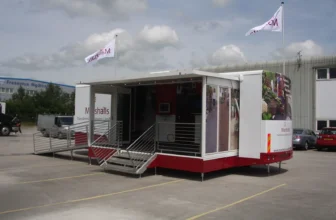
Offshore staff augmentation’s strategic advantage has been increasingly apparent to firms that require specialized domain skills and scalable staff solutions. The model, whereby distant members of a foreign country are brought into an organization, is a model of immense benefit, but at the same time presents inherent issues, primarily issues related to communication.
Communication is the blood of any thriving organization, and in such a situation where there is geographical distance and operational environments, it is even more essential. Having an awareness and readiness for such communication challenges is the secret to keeping the free-flowing coordination and the utmost benefit from the offshore teams.
This article delves into the intricate communication dynamics of offshore staff augmentation environments and offers actionable, step-by-step advice on how to construct successful and productive virtual teams. Understanding these communication dynamics is essential for any organization unleashing the potential of a distributed workforce.
Table of Contents
Understanding the Communication Environment of Offshore Teams

Source: ncube.com
The Geographical Distance Factor
Physical distance in and of itself inherent in offshore staff augmentation generates a first order of communication complexity. Absence of spontaneous, face-to-face contact, the foundation of co-located teams, requires more reflective and formal communication modes. According to a 2024 Journal of Global Management study, lack of casual “water cooler” interaction can lead to diminished team cohesion and remoteness among isolated members. Physical distance may also increase other communications problems and therefore make proactive steps even more critical.
Working Around Technology Differences
Technology enables offshore teams to exist, yet infrastructure, internet availability, and communication device preference can create unanticipated communication roadblocks. In a 2024 Deloitte report, it was stated that unequal technology access is a massive problem for global distributed workforces, hindering real-time collaboration and the sharing of documents. Offering the same and compatible technology to all members of a team, and appropriate technical support, is a bare minimum to have good communication.
The Language and Interpretation Nuances
Although there is a common working language, there are small language nuances, like the variations in vocabulary, grammar, and accent, which lead to miscommunication. Since Dr. Geert Hofstede, a cross-cultural communications expert, described in his seminal book that language is based on culture and literal translations are not always identical, these language nuances can lead to communication barriers and require more clarity and active listening from all members of the team.
Strategies for Building Strong Communication Frameworks

Source: vsourz.com
Having Clear and Consistent Communication Procedures
Proper communication between offshore staff augmentation necessitates setting clear and uniformly practiced communication procedures. This entails setting preferred communication modes for categories of information (e.g., formal updates by email, instant message for minor questions, video conferencing for meetings). Setting response time expectations, availability during simultaneous working hours, and escalation provide clarity and accountability. Project management software with integrated communication features can also be used to enable information sharing and discussion for work items.
Technology Usage to Ensure Smoother Interaction
Offshore teams employed in organizations need to employ technology carefully to bridge the geographical divide. Video conferencing equipment with screen sharing solutions makes conference sessions more interactive and participative in nature. Editing websites that provide collaborative services enables real-time co-creation and comments. Employing team communication equipment with independent channels for distinct projects or topics is straightforward in maintaining dialogue and providing the right individuals with the appropriate information. Technology checks on a regular basis and proper training on such gadgets are required to achieve maximum usage.
Imposing Structured Communication Cadences
Regular cadence of communication maintains dispersed teams coordinated and informed. Examples are regular team meetings (daily stand-ups, weekly progress reviews), individual check-ins between managers and team members, and scheduled breaks in virtual interactions for relationship development. According to a 2025 McKinsey report, teams with structured and frequent communication rhythms saw a 25% more successful rate of project success. Regularly held check-ins create pathways for transparent questions, information sharing, and relationship development.
Encouraging Active Listening and Clarity
Lacking the non-verbal signals that come with live communication, active listening assumes a most important role in virtual communication. Encouraging paraphrasing and summarizing to ensure mutual understanding is imperative. Expressing the necessity of simple and direct communication, avoiding jargon or ambiguous words, and clarification when uncertain can greatly reduce the risk of miscommunication.
Establishing a Communication-Focused Culture in Offshore Teams

Source: multiplymii.com
Promoting Openness and Open Communication
To establish trust among offshored teams, openness needs to be cultivated as a culture and information needs to be provided freely and in an unhibited style. Creating open communication so that team members do not hesitate to ask questions and express concerns with the fear of rejection reinforces the open communication and team culture of the workplace. Regularly scheduled all-hands meetings or virtual town halls can efficiently disseminate significant company news and facilitate free Q&A.
Investment in Cross-Cultural Communication Training
While linguistic skills are required, cross-cultural communication skills of being aware of differences in culture while communicating are also important. Investment in training in cross-cultural communication sensitizes employees to diverse norms of communication, such as directness vs. indirectness, high-context vs. low-context, and multiple styles of feedback. Training programs and course materials offered by institutions like the Cultural Intelligence Center can be used to build cross-cultural communication competence.
Developing Empathy and Understanding
Having team members learn and appreciate the knowledge of their culturally diverse teammates 1 builds empathy and strengthens relationships. Providing team members with a chance to learn about each other’s cultures, perhaps through online cultural exchange courses or simple conversation, may develop stronger relationships and improve communication.
Identifying and Resolving Communication Issues Early
It is critical to have processes to identify and resolve communication issues early. Routine feedback surveys, special communication effectiveness checks, and honest communication about communication styles can catch problems before they are big problems. Addressing these issues proactively shows concern about effective communication and results in a better and more productive offshore working environment for teams.
Measuring and Increasing Communication Effectiveness

Source: blog.heartmanity.com
- Key communication metrics definition ─ Organizations can decide key metrics against which progress will be measured in order to assess whether their communication efforts are bearing fruit. For instance, response time, percent project completion, communication team satisfaction scores, and reported misunderstanding rate.
- Collecting ongoing feedback ─ On an ongoing basis, feedback channels such as surveys and individual meetings allow constant monitoring of communication effectiveness among offshore teams. Such feedback provides input regarding areas of success and areas that are poor and must be improved.
- Shaping strategies through data and feedback ─ Communication data and feedback offered should be utilized to refine and modify communication strategies in the future. Iteration and flexibility enable the team’s communication patterns to keep functioning even as the team expands and requires change for each project.
Conclusion
Offshore staff augmentation communication is a process that is always learned, and there must be an intentional, multi-party process. Through creating effective procedures, being tech savvy, constructing communication-driven cultures, and consistently monitoring and improving communication practice, businesses are able to convert potential communication barriers into channels of effortless cooperation and heightened productivity.
The secret to remote work success is cracking the code of distance and constructing strong, communicative links that are indifferent to geography. Taking an active and aware communication approach is not only a matter of overcoming adversity; it is about unleashing the full power of a remote workforce and sustaining success in the era of virtual collaboration.







